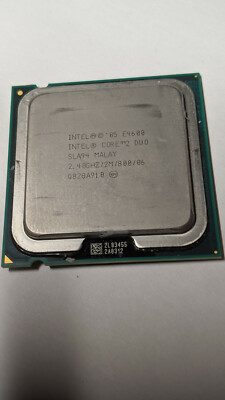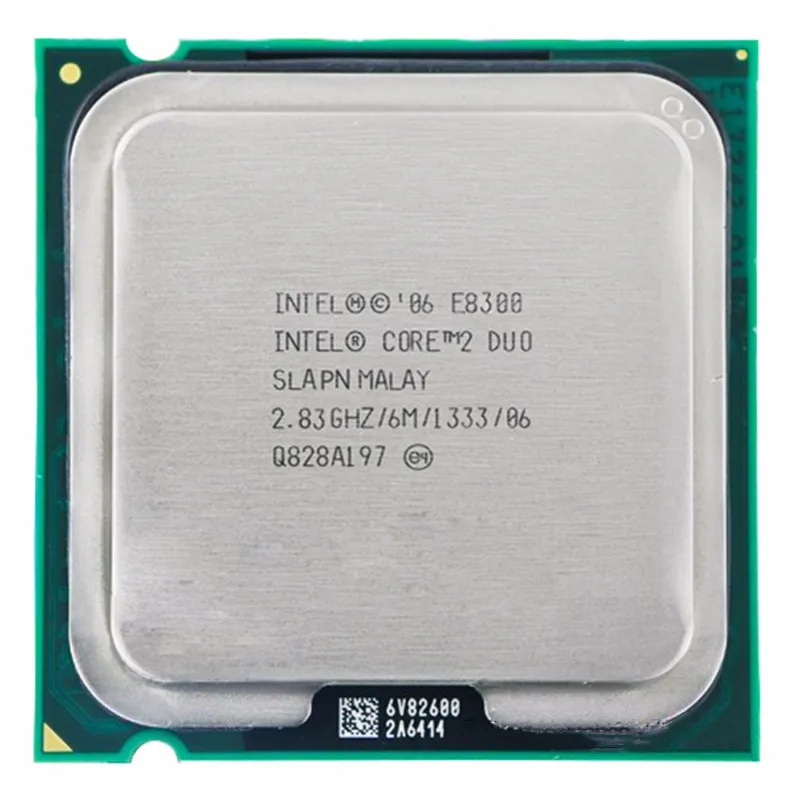

- REFURBISHED INTEL CORE 2 DUO E4600 2.4 GHZ UPGRADE
- REFURBISHED INTEL CORE 2 DUO E4600 2.4 GHZ SERIES
The two points of comparison will be technical specifications and the only other factor which matters, which is – performance. The following comparison will provide an overview about how the i3 processors are different from their dual core predecessors. Today, Intel has gone through a phase of radical innovation to introduce three successive generations of core i3 processors, that are a significant improvement over the core 2 duo line. Intel’s dual core and core 2 duo processors were the first ones to introduce multi-core processor based computing. With dual, quad and even six core processors hitting the market, there are many more factors to be considered, than before. The entry of multiple core chips changed it all and life became complicated. All you had to look at was the clocking frequency and cache size.
REFURBISHED INTEL CORE 2 DUO E4600 2.4 GHZ UPGRADE
If you can’t make up your mind about whether or not, an upgrade to a core i3 line would be worth it, keep reading ahead.Ī comparison between processors was simple some years ago with a single core processor. core 2 duo processors, which may help you decide which one to go for. In this Techspirited article, I present a comparison of third, second and first generation core i3 vs. The old war horses are still in use all over the world. Although core 2 duo processors are slowly being phased out of production, they are still available in the market. The new hierarchy of Intel chips, in ascending order of computing power, are the core i3, i5 and i7 processors.Īll these lines have now evolved to their third generation with the 22nm Ivy Bridge architecture being the latest. In fact the old core 2 duo line was overthrown by the first two generations of i3 processors long ago. The core i3 processors, now in their third generation Ivy Bridge line have supplanted the core 2 duo line in the entry level domain. These include the entry-level, mid-level and high-end processors. The company delivers chips with varying degrees of power and clocking speed to serve the diverse requirement levels of its users. The forerunner in this race to provide the fastest computer processors, who’s probably miles ahead of its competitors, is the computing giant Intel. We live in times where computing power, once available only at the level of super computers, is now within grasp of the common man. Hyper-Threading, DMI bus, higher processing speed and HD 2500/4000 graphics, along with low power consumption provided by the i3 lines make them worth an upgrade.

REFURBISHED INTEL CORE 2 DUO E4600 2.4 GHZ SERIES
Being the two main entry-level processor lines developed by Intel, a comparison of first, second and third generation core i3 series with core 2 duo processors will help you make an informed decision. core 2 duo comparison presented here will be a helpful read. Depending on the motherboard, higher memory frequency may be supported.If you are looking for an entry-level laptop or desktop computer, the core i3 vs. Types, maximum amount and channel number of RAM supported by Core 2 Duo E4600's memory controller. Some are specific to Intel only, some to AMD. Supported virtual machine optimization technologies. Processor technologies aimed at improving security, for example, by protecting against hacks. You'll probably need this information if you require some particular technology. Technological capabilities and additional instructions supported by Core 2 Duo E4600. Some can even double their declared thermals given that the motherboard allows to tune the CPU power parameters.

Note that power consumption of some processors can well exceed their nominal TDP, even without overclocking. Useful when planning a future computer configuration or upgrading an existing one. Information on Core 2 Duo E4600 compatibility with other computer components and devices: motherboard (look for socket type), power supply unit (look for power consumption) etc.

These parameters can generally indicate CPU performance, but to be more precise you have to review its test results. Basic microprocessor parameters such as number of cores, number of threads, base frequency and turbo boost clock, lithography, cache size and multiplier lock state.


 0 kommentar(er)
0 kommentar(er)
